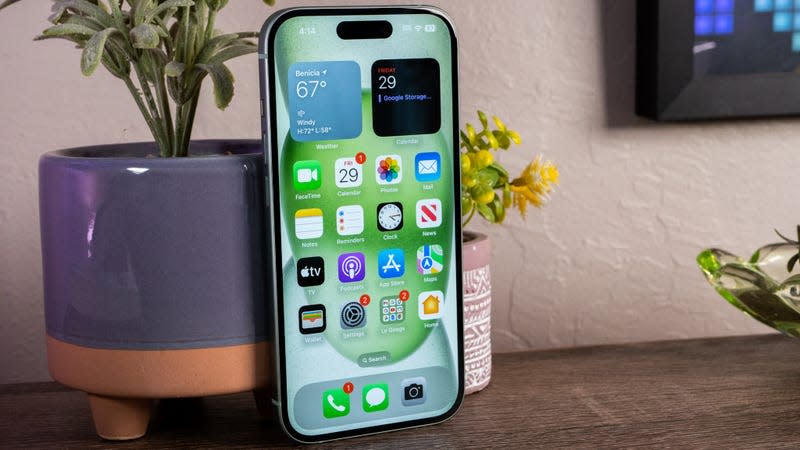Apple Will Allow You to Fix Your iPhone with Used Parts After All

Apple has announced that it’s relaxing its policy on used parts for iPhone repairs. This makes it easier to fix your broken iPhone and save some cash along the way.
In a press release, Apple calls this new capability an “upcoming enhancement” to its existing repair processes. “Used genuine Apple parts will now benefit from the full functionality and security afforded by the original factory calibration, just like new genuine Apple parts.” The policy will go into effect later this year, presumably around the launch of the iPhone 16.
Previously, if you went with a third-party supplier or through a repair shop with spare iPhone parts, you had to use Apple-supplied parts, or the device wouldn’t work correctly. Apple employs “parts pairing,” linking a component’s serial number to a particular device. You can’t even swap batteries between iPhones without running into this semi-blockade.
Apple maintains that parts pairing is “critical to preserving the privacy, security, and safety of iPhone,” which is why it will allow for remote calibration of the parts once installed in another device. And for repair shops, Apple writes that “service providers will no longer need to provide a device’s serial number when ordering parts from the Self Service Repair Store for repairs not involving replacement of the logic board.”
Although iPhone users have had a way to repair devices when broken or faulty—it’s so much better than it used to be—up until now, there’s been no easy path for replacing broken parts with used ones from third parties. If you wanted to fix your iPhone, you had to go directly to Apple to procure the necessary parts and pay more for a proper repair that wouldn’t render your device useless.
Apple is also implementing an Activation Lock feature to help deter a black market of parts procured from stolen iPhones. If you declare your device is lost, Apple will not calibrate the components once they’re in a new body.
The Right to Repair movement has had some wins over the past few months. In March, Oregon passed a Right-to-Repair law, which likely helped spur Apple toward opening up to outside vendors a little more—it’s much like the motivation behind why the iPhone 15 finally uses USB-C (Thanks, EU mandate!)
In the end, Apple stands to win from this decision. It enables good graces between the company and its diehard users and those who want to be users but can’t afford the latest and greatest. It will also make it easier to convert folks who might buy an earlier model iPhone for the capabilities over a newer budget Android offering. In the end, it all helps Apple maintain its dominance in the smartphone market share, even if it’s with older devices.

